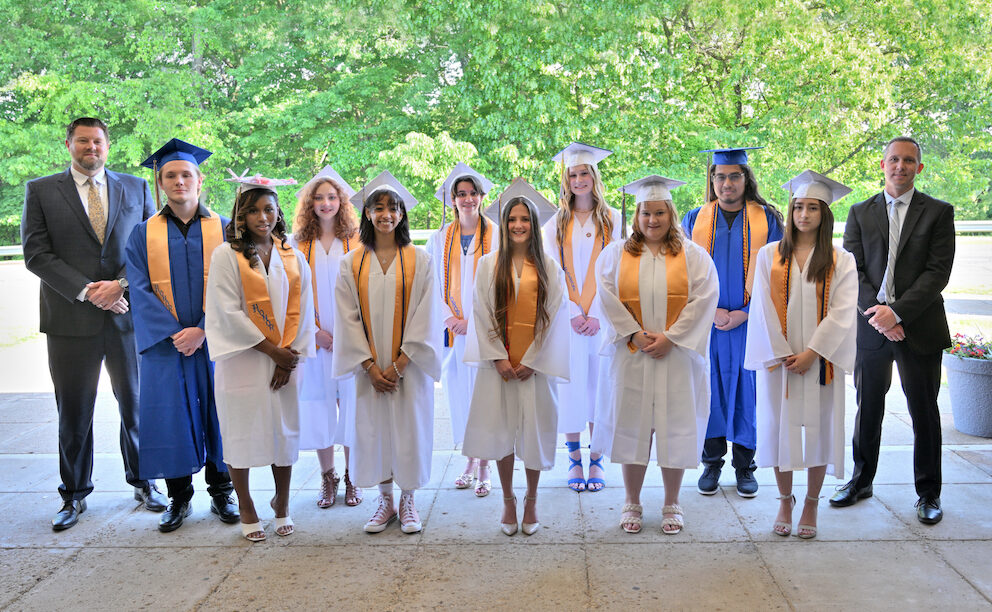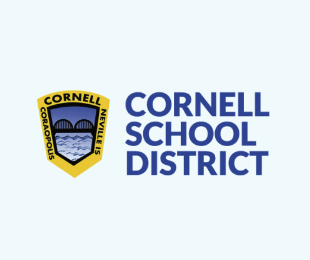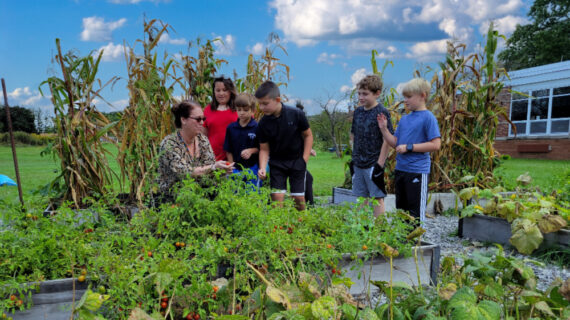
`See what you can do’: At Cornell School District, carving all possible pathways to college
This story is one in a series created in collaboration with the AASA Learning 2025 Alliance to celebrate the work of groundbreaking school districts in the Pittsburgh region. Kidsburgh will share these stories throughout 2023.
There is modesty in Heidi Stephenson’s voice when she mentions that she will arrive as a freshman at the University of Pittsburgh this fall with nearly a year of college already completed. But there are also quiet notes of pride and gratitude.
Stephenson has worked hard, choosing to take a total of eight dual-enrollment and AP courses during her years at Cornell High School and achieving high enough grades to earn both high school and college credit for these classes.
“Cornell is definitely a small school. I’m in a graduating class of 30. But there’s so many opportunities,” Stephenson says. “I’m taking college digital literacy, college ecology, college government, college journalism . . . I’m so thankful that I have the opportunity to take these classes.”
The practical benefits are many: Dual-enrollment classes save students thousands of dollars in tuition costs. And when it’s time to apply to college, university admissions officers see that the student has handled college-level work. But the intangible benefits can be even more important — especially for teens who are the first in their family to pursue a college degree. Stephenson and her classmates have built real confidence in their ability to thrive at college.
“There’s a mindset barrier for some of our kids. They may think, ‘Hey, I’m not capable of doing that,’ because college isn’t something they had been expecting to do,” says Cornell superintendent Dr. Aaron Thomas. “I’ve had conversations where kids say, ‘Nobody in my family goes to college.’ But they don’t have to be held back by that. Our whole thing is, just experience it. See what you can do.”
Participating in Cornell School District’s College and Career Pathways program also helps students begin college with clarified goals. Stephenson had once envisioned a career as a teacher. But her college-level courses have shown her new possibilities. She’s now planning to major in business.

ELIMINATING BARRIERS OF ALL KINDS
Cornell has 10 dual-enrollment courses underway and plans to offer more in the future through partnerships with Robert Morris University, La Roche University, Point Park University, and the University of Pittsburgh. The school also brings students on visits to these and other universities, giving them a chance to experience college campuses and demystifying the application process.
The district is also rethinking its course offerings to introduce high schoolers to potential careers they might not have considered.
“The best example is cybersecurity,” Thomas says. “That’s such a new concept, but there will be so many jobs in it. We’re looking to start exposing kids to some of these 21st-century jobs and career pathways.”
But to make all this work — to have kids ready to make the most of these experiences by the time they reach high school — schools need more than just the right mix of classes.

With that in mind, Cornell has begun offering a wide range of services. Along with breakfast and lunch served at school, some students head home on Fridays with a backpack full of food to share with their family.
So much of this work is about partnerships: Cornell collaborates with a number of local organizations to provide medical checkups and dental care, and even 3D-print eyeglass frames for kids who need them.
This eagerness for partnerships and collaboration has led Cornell to join the Western Pennsylvania Learning 2025 Alliance, a regional cohort of school districts working together — and with peers across the country — to create student-centered, equity-focused, future-driven schools that prepare every learner for tomorrow. Led by local superintendents and AASA, The School Superintendents Association, the Alliance gives Thomas a chance to discuss challenges and solutions with folks from other districts.
Last spring, Cornell also began a partnership with Literacy Pittsburgh to bring language support to parents who speak English as a second language. This can help parents feel more connected to the school district and give them more opportunities to thrive.
“This school has done a good job of wanting to see parents succeed,” says Leah Patterson, a program coordinator at Literacy Pittsburgh. “They’ve even added their own support as far as childcare is concerned. They have a volunteer group that spends time with the children in the room next door, so that the parents can focus.”
Taking it full circle, Cornell included language translation services during a recent evening when parents new to English got help filling out the Free Application for Federal Student Aid, a key step in affording college tuition for their kids.
Whether Cornell School District is helping students or their parents, the goal is to open as many doors as possible.
“Every student doesn’t have the same need. But whatever the needs are, we know we can eliminate the barriers, especially through working with so many good partners in the community,” Thomas says.
“We see that high school can position kids for success,” he says. “Maybe by having that positive experience in high school, it won’t be so daunting to try either a two-year institution or a four-year institution. From there, anything is possible.”
Want to download this story? Click here for a PDF.











